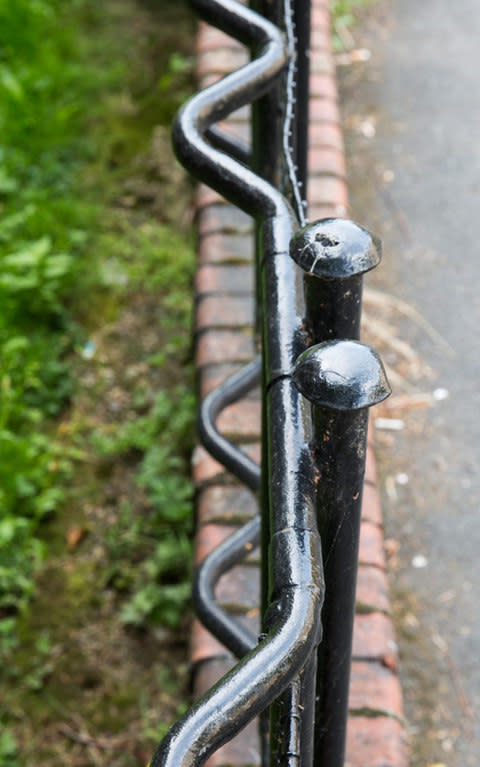Campaign to save World War II stretchers today serving the capital as railings
On numerous housing estates throughout London, the rows of black steel and mesh railings guarding red brick mansion blocks appear, at first glance, little more than a quirk of post-war architectural design.
However, unbeknown to thousands of passersby each day, those sometimes rusting or buckled fences were in fact the emergency stretchers that helped to save the lives of those injured during the Blitz.

Now, a campaign has been launched to protect and restore these metal fences, mainly found on estates in South London, that had served so well as stretchers during World War II.
Rosie Shaw, founder of the recently formed Stretcher Railing Society, said: “They have a fascinating history that many of us are unaware of. We want to work with councils and conservators to try to preserve these amazing railings which are such an important part of our heritage.
“Some are now rusting, others have bits missing, a few have been badly damaged. The goal is to save the ones that can be saved. However, some councils do not know what to do with complex restorations.
“Our long term aim is try to get some kind of funding for conservation work. It would be a great shame if they were allowed to fall into disrepair.”
More than 600,000 of these stretchers were produced in the months leading up to the start of the war in 1939, ready for the German Luftwaffe’s raids on Britain. It is understood the stretchers were mainly manufactured at plants in Hertfordshire and the West Midlands.

Made of two steel poles supporting a wire mesh, they could be mass produced with ease. More importantly, they could be cleaned down and disinfected from germs, dirt and blood far easier than the canvas or wooden stretchers that were used during World War I. There were two kinks in the poles meaning they could be rested on the ground but still be picked up quickly and easily.
While they were efficient and strong, patients who were carried on them by volunteers from the Civil Defence Service, were known to have complained that they were terribly uncomfortable.
Abigail Cornick, curator at the Museum of the Order of St John in Clerkenwell, London, which has one of the stretchers in its collection, said: “The fact they were made from a single material meant they could be made quickly and in high numbers. Because it had a wire mesh, it meant they were very easy to clean, particularly in the event of a gas attack.”
The scale of the production hints at the level of the civilian casualties that the government was expecting.
After the war, there was a huge stockpile of the stretchers. Because so many railings had been removed before 1939 to help fuel the manufacture of munitions and other weaponry, many city estates had lost their perimeter fencing. And, with the new drive to build council houses, new railings were needed. So, the stretchers were welded vertically together and fixed on poles, often sunken into concrete on a small wall. Today, they can be found at Kennington Park Estate, the Glebe Estate in Camberwell and on estates in Deptford and Dulwich.
Their use illustrates how post-war Britain was eager to “upcycle”, or find alternative uses for otherwise obsolete equipment.
“What’s very impressive is how theses were upcycled in such an innovative way,’ Shaw adds. “The stretchers were also used in Scotland and cities like Leeds. But, I believe they were only later used as railings on London estates built post-war.”

 Yahoo News
Yahoo News 